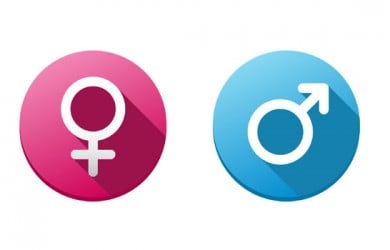How Many Genders Are There? Breaking Down the Spectrum

Unlock Daily 30-Sec Tips for a Happier Relationship
👉 Subscribe FREEKey Takeaways
Marriage.com AI Quick Summary
What does it really mean to “be” a gender?
For some, it’s simple—something assigned at birth, clear-cut, and rarely questioned. For others, it’s a journey of discovery, language, and self-understanding. Gender has long been seen through a narrow lens: boy or girl, male or female.
But human identity has always been more colorful than that… it just took us a while to catch up. Now, terms like “non-binary,” “agender,” and “genderfluid” are showing up in everyday conversations—and not just in textbooks or social media bios.
So, how many genders are there, really?
Is it a fixed number, or something far more flexible, layered, and personal?
The truth is, gender can’t always be boxed in. And maybe—it was never meant to be.
What does gender really mean?
Gender isn’t just about bodies or birth certificates—it’s about who we are, how we feel inside, and how we express that to the world. For some, gender fits neatly into words like “man” or “woman.” For others, it’s softer, wider… something in between or beyond.
It can feel fixed or fluid.
And honestly?
That’s okay. Gender is deeply personal; it’s not always visible, and it doesn’t have to make sense to everyone. What matters is that it feels true to you. Because identity isn’t one-size-fits-all—it never was!
According to the American Psychological Association, gender is more than biology—its a deeply personal experience shaped by society, culture, and the mind.
How many genders are there? Breaking down the spectrum
Gender has never been one-size-fits-all, though for a long time, that’s exactly how it was treated. Many of us grew up hearing there were just two options: male or female, boy or girl. But as conversations evolve and more voices are heard, it’s clear that gender isn’t a simple checkbox.
It’s layered, lived, and sometimes hard to describe in words alone. So let’s break it down—not to limit it, but to understand how gender has been viewed traditionally, how it’s expanding, and what science and psychology now say about it all.
-
Traditional binary understanding
For much of history, gender was seen through a binary lens—male or female, nothing in between. This traditional framework linked gender directly to biological sex: if you were born with specific anatomy, you were expected to grow up, act, and live according to that category. Simple. Fixed. Unquestioned.
This binary view became the blueprint for everything:
- Legal systems: Laws were written around “men” and “women,” often ignoring those who lived outside those labels.
- Social roles: Expectations around careers, caregiving, clothing, and behavior were heavily gendered.
- Religious and cultural norms: Many belief systems reinforced the idea that there are only two “natural” genders.
- Public spaces: From bathroom signs to school uniforms, the world was built on the assumption that everyone fit neatly into either male or female.
But human identity has never been that black and white.
Even within this rigid structure, people existed who didn’t feel fully male or female—people who questioned, pushed back, or quietly lived outside the binary, often without language or support to describe their truth. Their experiences weren’t new… just overlooked.
Now, science is offering new insight, too.
When asking how many genders there are scientifically, researchers are increasingly moving away from binary thinking. They recognize that gender identity is influenced by biology, psychology, environment, and culture, not just chromosomes.
And when it comes to “How many biological genders are there?”—even that question doesn’t have a simple answer.
While male and female are the most common biological categories, intersex individuals—born with a mix of male and female anatomical traits—challenge the idea that biology is strictly binary. Estimates suggest that up to 1.7% of the population is born with intersex traits, roughly as common as red hair.
So, while the binary model shaped generations of understanding, it turns out… it was never the whole story.
-
Contemporary and inclusive understanding
Today, more people are beginning to see gender not as a strict binary, but as a spectrum—fluid, diverse, and deeply personal. This shift hasn’t come out of nowhere; it’s the result of lived experiences finally being spoken aloud, listened to, and recognized.
What was once hidden or dismissed is now being named with pride. Rather than forcing people into boxes that don’t fit, this view allows for more freedom, more nuance… more humanity.
Some commonly recognized gender identities outside the binary include:
- Non-binary – A broad umbrella for anyone who doesn’t identify strictly as male or female.
- Agender – Describes people who don’t identify with any gender at all.
- Genderfluid – Those whose gender identity may shift or change over time.
- Bigender/Demiboy/Demigirl – Identities that blend or partially connect to traditional categories, but not fully.
And then there’s transgender—an identity that describes someone whose gender differs from the one they were assigned at birth. Some trans people identify as men or women; others fall elsewhere on the spectrum. What matters is that it’s their identity, and it’s real.
Research shows that transgender children who receive family and social support show normal levels of depression and anxiety, suggesting that affirmation leads to better mental health outcomes.
Cultural understanding of gender diversity isn’t a modern invention—it’s a rediscovery:
- Two-Spirit – A sacred, historical identity recognized in many Indigenous North American cultures. Often spiritual, ceremonial, and respected.
- Hijra (South Asia) – Legally recognized in countries like India, Pakistan, and Bangladesh, with deep cultural and religious roots.
- Fa’afafine (Samoa), Bakla (Philippines), and Kathoey (Thailand) – Longstanding gender-diverse identities that predate Western gender categories.
Other points to consider:
- Language matters: As people explore gender, new terms emerge to better express lived realities. It’s not about being trendy—it’s about being understood.
- Expression ≠ identity: Someone’s style, voice, or behavior doesn’t always indicate their gender. Expression is external; identity is internal.
- No single “right” way to be: There’s no checklist or test—gender is about what feels true and authentic to the person living it.
The beauty of this inclusive lens is that it doesn’t take anything away from anyone—it simply makes more room for everyone to be seen.
-
Medical and psychological perspectives
For a long time, science mirrored society, categorizing people as either male or female, man or woman. But as understanding deepens, medical and psychological experts now widely recognize gender as a complex, multi-layered experience, not just a physical trait.
Institutions like the American Psychological Association (APA) and the World Health Organization (WHO) now affirm that gender is shaped by more than biology.
WHO defines gender as socially constructed roles and identities, separate from biological sex, and acknowledges gender diversity across cultures.
It involves identity, emotion, social experience, and brain development. It’s not something others can label for you—it’s something you come to understand about yourself.
Here’s what many major health organizations now acknowledge:
- Gender is a spectrum: It’s not just male or female; it can exist anywhere between or entirely outside those labels.
- Gender identity is real and valid: Whether someone identifies as transgender, non-binary, or another identity, their experience deserves respect and affirmation.
- Gender doesn’t always match assigned sex: Biological sex isn’t destiny. People may feel deeply misaligned with what they were told they were “supposed” to be.
- Supporting someone’s gender identity improves mental health: Studies show that gender-affirming care (like name and pronoun recognition, access to supportive therapy, and, when chosen, medical transition) can significantly reduce depression, anxiety, and suicidal ideation.
Science is also beginning to explore how brain patterns, hormones, and genetic variations may relate to gender identity. But even as research continues, one thing is clear: people don’t need to be “proven” by science to be respected.
Medical professionals increasingly emphasize listening to people’s stories, identities, and needs, rather than trying to fit them into outdated molds.
The shift is subtle, but powerful: from “What’s your gender?” to “Who are you, and how can we support you?”
In the end, science and empathy go hand in hand, and both point to the same truth: gender is not something to be fixed or feared; it’s something to be honored.
Watch this TED Talk in which Dr. Ronnie Gladden shares their journey of identity discovery through transgender and transracial narratives, emphasizing that identity rights are human rights:
Can gender be fluid or change over time?
Yes—gender can absolutely be fluid. For some, it stays the same throughout life; for others, it shifts, evolves, or unfolds gradually, like turning pages in a story they didn’t know they were writing. This isn’t confusion or “just a phase”… it’s discovery.
Sometimes, the words that once felt right no longer do—and that’s okay. Growth is natural. People change, and so can their understanding of who they are. There’s no deadline, no test—just truth, in motion.
Embracing gender diversity today
The more we listen, the more we learn about others and about ourselves. Gender isn’t always visible, and it doesn’t need to be explained to be real. Some people feel at home in the labels they were given; others find new language that fits better… and some are still figuring it out, day by day.
So when we ask, “How many genders are there?” maybe the answer isn’t a number, but an invitation to stay open, kind, and curious.
Because honoring someone’s truth doesn’t cost us anything, but it can mean everything to them.
 Tips
Tips
Write your tip or submit a video tip
All tips are reviewed before the publishing.
Share this article on
Want to have a happier, healthier marriage?
If you feel disconnected or frustrated about the state of your marriage but want to avoid separation and/or divorce, the marriage.com course meant for married couples is an excellent resource to help you overcome the most challenging aspects of being married.
Related Quizzes
Unlock Daily 30-Sec Tips for a Happier, Healthier Relationship
👉 Subscribe FREE on YouTube We'd love your feedback!
We'd love your feedback!
 Expert Q&A
Expert Q&A
Ask your question related to this topic & get the support you deserve from experts.
















 Thanks for your feedback!
Thanks for your feedback!